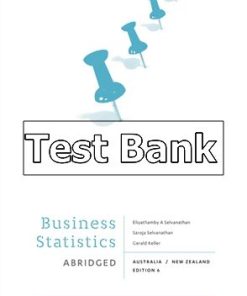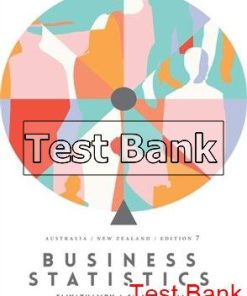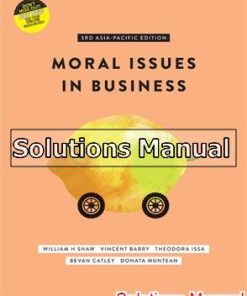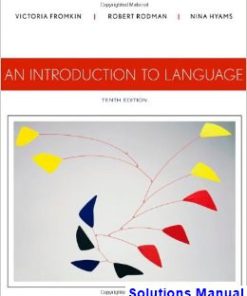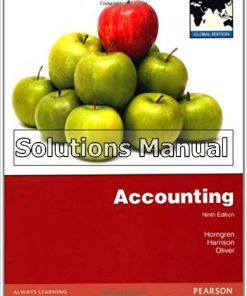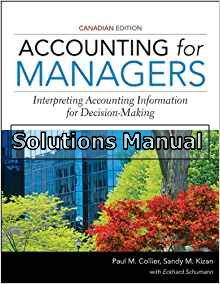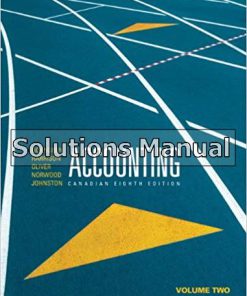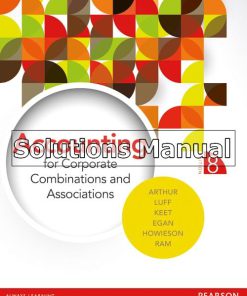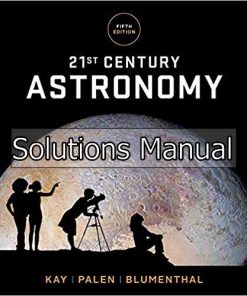Introduction to Language Australia and New Zealand 8th Edition Fromkin Solutions Manual
$26.50$50.00 (-47%)
Introduction to Language Australia and New Zealand 8th Edition Fromkin Solutions Manual.
You may also like
Instant download Introduction to Language Australia and New Zealand 8th Edition Fromkin Solutions Manual pdf docx epub after payment.
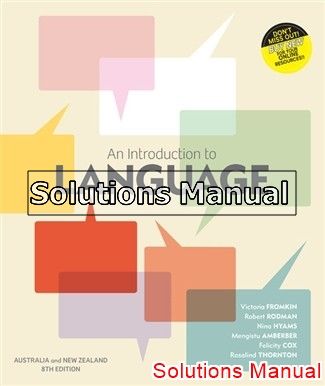
Product Details:
- ISBN-10 : 1413017738
- ISBN-13 : 978-1413017731
- Author: Victoria et al Fromkin (Author)
AN INTRODUCTION TO LANGUAGE is ideal for use at all levels and in many different areas of instruction, including education, languages, psychology, anthropology, English, teaching English as a Second Language (TESL), and linguistics. All chapters in this best-seller have been revised to reflect recent discoveries and new understanding of linguistics and languages.
Table of contents:
1: THE NATURE OF HUMAN LANGUAGE.
1. What Is Language? Linguistic Knowledge. Linguistic Knowledge and Performance. What Is Grammar? Language Universals. Animal “Languages.” Language and Thought. What We Know about Language.
2. Brain and Language. The Human Brain. The Autonomy of Language. Language and Brain Development. The Evolution of Language. Part
2: GRAMMATICAL ASPECTS OF LANGUAGE.
3. Morphology: The Words of Language. Dictionaries. Content Words and Function Words. Morphemes: The Minimal Units of Meaning. Rules of Word Formation. Sign Language Morphology. Word Coinage. Inflectional Morphemes. Morphological Analysis: Identifying Morphemes.
4. Syntax: The Sentence Patterns of Language. What the Syntax Rules Do. Sentence Structure. Sentence Relatedness. UG Principles and Parameters. Sign Language Syntax.
5. The Meaning of Language. What Speakers Know about Sentence Meaning. Compositional Semantics. Lexical Semantics (Word Meanings). Pragmatics.
6. Phonetics: The Sounds of Language. Sound Segments. The Phonetic Alphabet. Articulatory Phonetics. Prosodic Features. Phonetic Symbols and Spelling Correspondences. The “Phonetics” of Signed Languages.
7. Phonology: The Sound Patterns of Language. The Pronunciation of Morphemes. Phonemes: The Phonological Units of Language. Distinctive Features of Phonemes. The Rules of Phonology. Prosodic Phonology. Sequential Constraints of Phonemes. Why Do Phonological Rules Exist? Phonological Analysis: Discovering Phonemes. Part
3: THE PSYCHOLOGY OF LANGUAGE.
8. Language Acquisition. Mechanisms of Language Acquisition. Children Construct Grammars. Knowing More Than One Language. Second-Language Teaching Methods. Can Chimps Learn Human Language?
9. Language Processing: Humans and Computers. The Human Mind at Work: Human Language Processing. Computer Processing of Human Language. Part
4: LANGUAGE AND SOCIETY.
10. Language in Society. Dialects. Languages in Contact. Language in Use. Secret Languages and Language Games.
11. Language Change: The Syllables of Time. The Regularity of Sound Change. Phonological Change. Morphological Change. Syntactic Change. Lexical Change. Reconstructing “Dead” Languages. Extinct and Endangered Languages. The Genetic Classification of Languages. Types of Languages. Why Do Languages Change?
12. Writing: The ABCs of Language. The History of Writing. Modern Writing Systems. Reading, Writing, and Speech. Glossary. Index.
People also search:
Introduction to Language Australia and New Zealand 8th Edition
Introduction to Language Australia and New Zealand 8th Edition pdf
Introduction to Language Australia and New Zealand
what language is spoken in australia and new zealand
|
difference between an australian and new zealand accent
|
australia and new zealand latitude and longitude worksheet
how to tell difference between australian and new zealand accent

